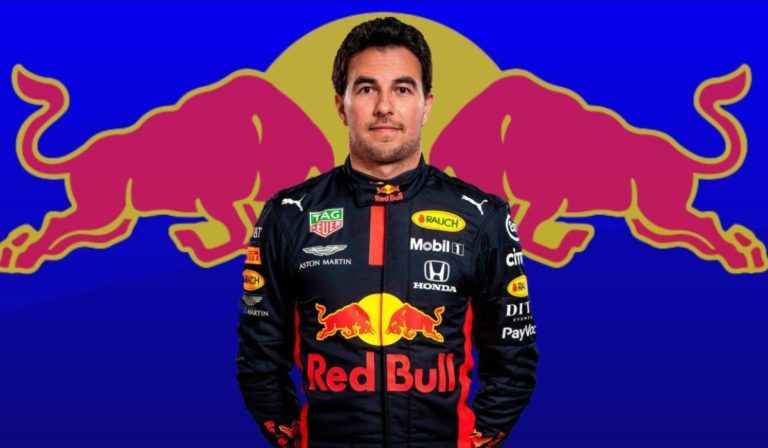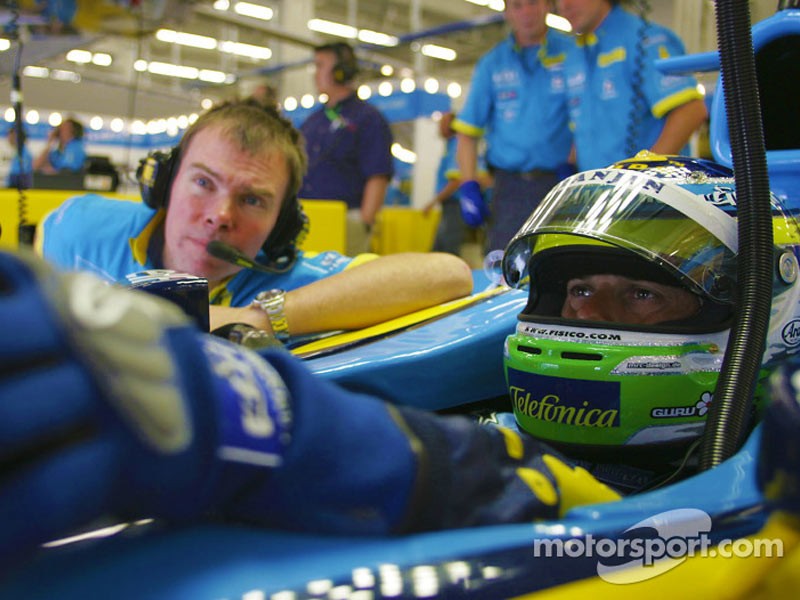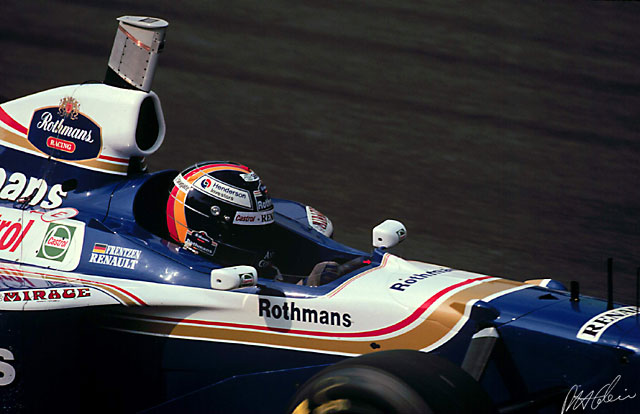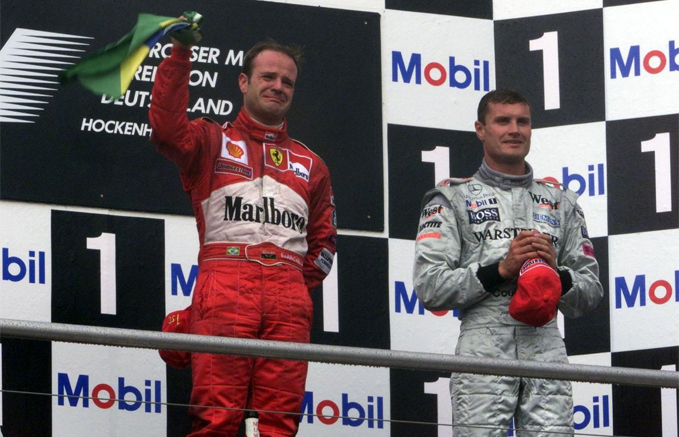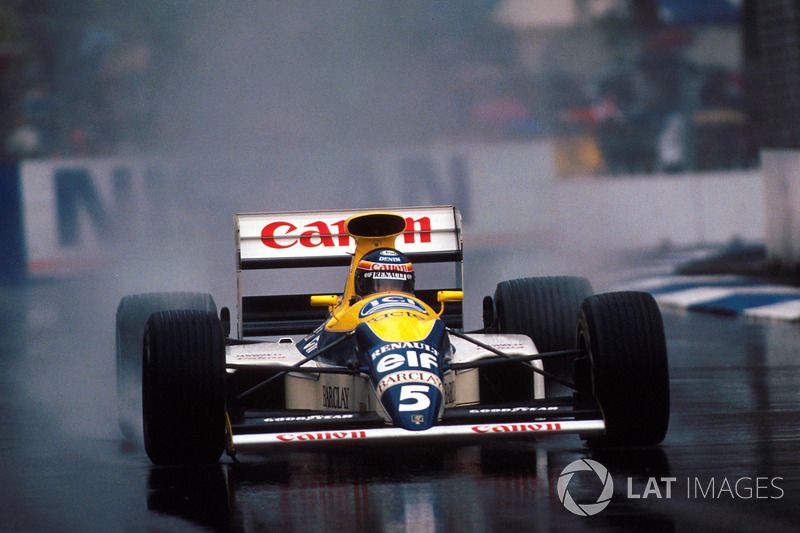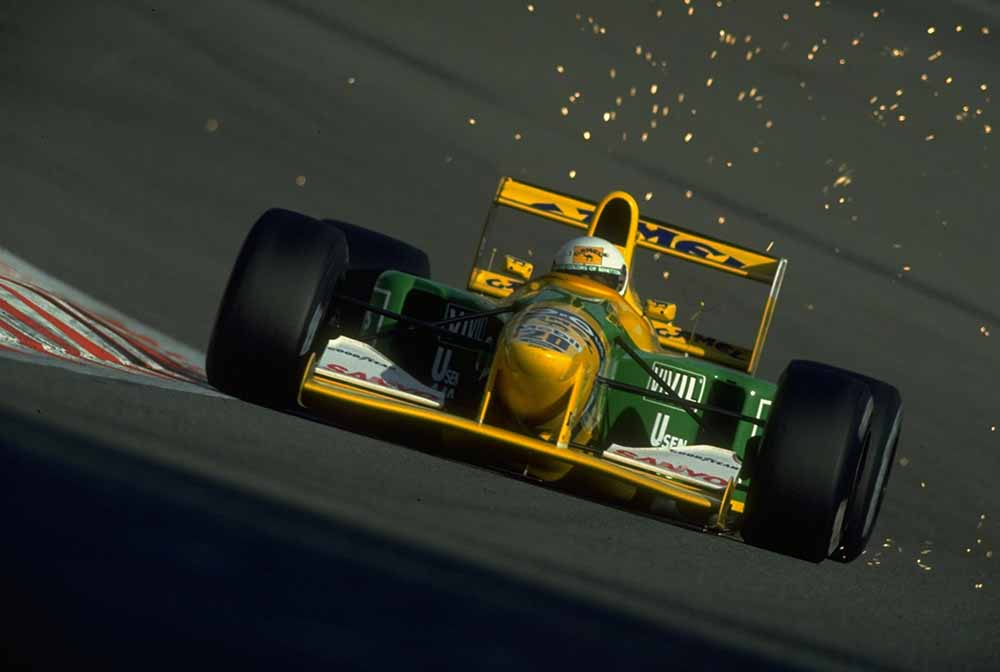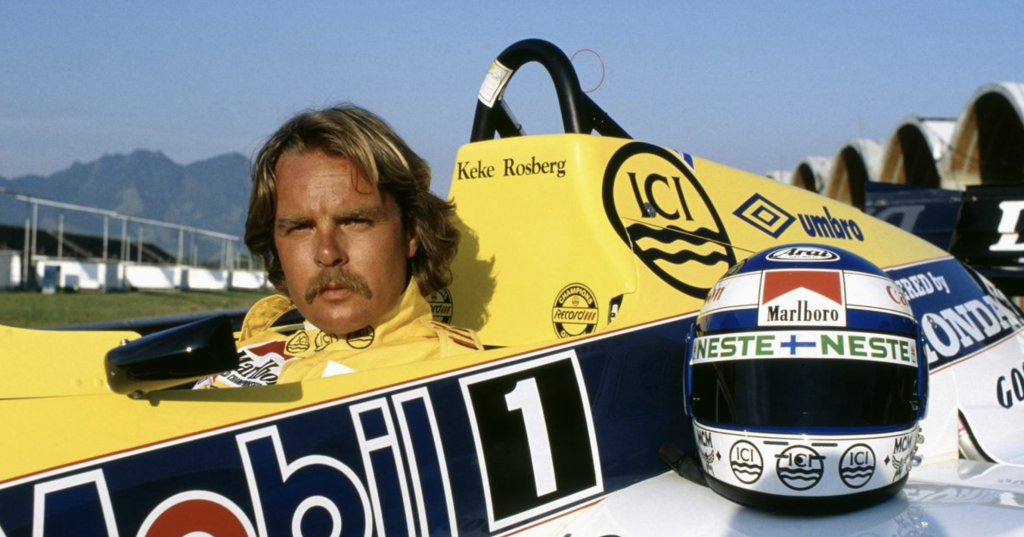After 9 seasons of overperforming in midfield cars (and 1 season underperforming in a McLaren), Sergio Perez has deservedly got the call up to drive for Red Bull, making his first chance to drive for a team which will expect to be up the front week in week out. After 10 podiums and a win, beating highly rated drivers like Hulkenberg, Kobayashi and Ocon, and surviving the collapse of team, the driver who I have rated as the best midfield driver of his generation finally has a chance to show his skills in the spotlight. It has been more than a decade since a predominantly midfield driver has been given the chance to drive for a top team, and up against a teammate destroyer like Max Verstappen, its unclear that midfield supremacy will equal success in a top team. So, what of drivers Perez has followed in the footsteps of?
The criteria of driver we are looking at here are drivers who were at least 28 years old before getting a callup to a team which was successful in the seasons before and during their stint in a front running car. These drivers also have at least four years’ experience driving for lower teams before getting their chance rather late on in their careers.
Giancarlo Fisichella
After his first full season with Jordan, Fisichella was labelled as a future champion and was chosen to lead the rebuild project of Benetton following its success in the mid-1990s. However, 5 years later and back at a now declining Jordan team, it looked as if Fisichella’s chance had been and gone despite beating Wurz, Button and Takuma Sato fairly convincingly in the intermittent years. A shock win for Jordan in Brazil and a successful season with Sauber in 2004, where he beat a young Felipe Massa, Fisichella got a second callup with the successor of Benetton, the far more successful Renault team, alongside Fernando Alonso.
At 32, Fisichella’s season in a top team couldn’t have started any brighter, taking pole and the win at the 2005 Australian Grand Prix. However, things did not continue that bright, Fisi retired from the next 3 Grand Prix and didn’t get back on the podium for 14 races. Famously Fisichella lost another win in Japan, where Raikkonen took the lead and win on the final lap in an iconic moment round Suzuka, while teammate Fernando Alonso went on to win the championship. Alonso won the championship again in 2006, while Fisichella mustered four 3rd places and a win in Malaysia, finishing 4th in the championship. While this doesn’t appear great, Fisichella’s points in both seasons helped Renault pick up two constructors championships despite not having the best car in either season, so Fisi’s time can only be counted as a success. Fisichella had one more season at Renault in which they had fallen into the midfield, before experiencing an Indian summer at Force India before getting the callup to drive for Ferrari for the final few races of 2009, before retiring.
Hit
Heinz-Harold Frentzen
Frentzen came into Formula 1 with a ferocious reputation, having beaten Michael Schumacher in Formula 3 and spearheaded Mercedes push at Le Mans. Frentzen had three very impressive years at the then fresh Sauber team, getting their first podium in 1995 and demolishing highly rated Austrian Karl Wendliger and at the time high profile signing Johnny Herbert. This earnt HHF a drive at the reigning world champions Williams in 1997, replacing world champion Damon Hill.
Given his reputation, a lot was expected of Frentzen, expectation HHF would not ever meet. Having almost won in Australia to spin off chasing Coulthard and Schumacher with 3 laps to go, Frentzen took 4 races to even score a point. However, this first point score was a win at Imola, the only time Frentzen would win in a Williams. Five podiums in a row of the back end showed a better record than his critics suggest, but in what was comfortably the best car that year, more was expected from Frentzen than to end up a distant 3rd, and critics of Frentzen grew when he underperformed again the next season. Ironically, Frentzen became the championship contender people believed he was after moving on from Williams, when he and Jordan put up a surprise challenge in 1999, before stints at Arrows and Sauber
Miss
Rubens Barrichello
Until very recently the most experienced driver of all time, Barrichello seemed to be in a top car for the whole of his career but took a whole 7 years performing well in midfield teams like Jordan and Stewart before his performances saw Ferrari sign him up in 2000 to support their attempt to become world champions for the first time since 1979, as number two to lead driver Michael Schumacher. This was quite successful, only 5 drivers and world championships in a row. Barrichello himself had some famous moments of brilliance while Schumacher was off colour on some days, like going from 20th to win his first race in Germany 2000, a supreme drive in the topsy-turvy 2003 British Grand Prix, as well as the deep low of being told to move over for Schumacher in Austria 02. Over the 6 years of Ferrari Barrichello scored nine victories and finished 2nd in the championship twice in 2002 and 2004. Because of his number 2 status Barrichello was never going to challenge Schumacher, so giving the blueprint to Valteri Bottas of how to be a good number 2 is his biggest achievement. Barrichello left for Honda in 2006, which culminated in a championship challenge and 2 further victories for Braun in 2009.
Hit
Ivan Capelli
Ivan Capelli drove for Tyrrell, Jolly Club (who?) and most famously Leyton House between 1985 and 1991, where Ivan went so close to snatching shock wins for Adrian Newey’s designed sky-blue cars not once but twice in Portugal and France before Ferrari hired him to replace the at the time 3 time world champion Alain Prost for 1992. Unfortunately for Ivan, Ferraris 1992 car was an absolute dog, as the team barely held off Lotus to finish 4th in the championship. Capelli did himself no favours in this time, scoring just three points and being most famous for flipping his Ferrari in Monaco and generally facing the wrong way more than right. Capelli was dropped before the final two races of the season and his career peated out after just two races for Jordan in 1993.
Miss
Thierry Boutsen
Thierry Boutsen early career saw him as assume the role as the quintessential competent midfield runner over 4 years with Arrows and 2 years with Benetton, showing consistency and the odd shock result, before Williams came calling in 1989 to replace the Ferrari bound Nigel Mansell. The 32-year-old started off badly, breaking his foot in pre-season testing and struggling against Riciardo Patrese. Things picked up though as Boutsen was able to show off his wet-weather skills, running dead last at one point before making his way up to 2nd and inheriting his first win in Canada when Senna broke down almost a whole lap up the road, before inheriting another win in Australia when Senna crashed into the back of Martin Brundle’s Brabham. Boutsen finished the season 5th just three points off his teammate before winning in Hungary 1990 and beating Patrese to 6th in 1990. However, Williams opted to drop him for 1991 for the returning Nigel Mansell. Mansell went on to challenge for the title in 91 before dominating the title in 92 while Boutsen scored 2 points over the 2 seasons for Ligier before retiring with Jordan in 1993. Life’s not fair sometimes.
Hit
Johnny Herbert
Before breaking both legs in a horrible Formula 3000 race in 1988, Herbert was seen as the greatest British prospect since the 1960s. However, the permanent damage caused by the crash caused Herbert to radically change his driving style. Regardless, Herbert joined the F1 grid in 1989 with Benetton and then having four strong years with an ailing Lotus Team between 1990 to 1994. When Herbert was beaten by Mika Hakkinen in 1992 it looked like Herberts chance in the big league may have been missed. However, after JJ Lehto and Jos Verstappen’s failures alongside Michael Schumacher at Benneton, a 30 year old Herbert got signed in order to give Schumacher back up in the drivers and constructers fight against the Williams of Damon Hill and David Coulthard.
While Herbert was no match for Schumacher, Herbert did exactly what a number two driver needs to do, while Williams number two David Coulthard threw away numerous victories, Herbert picked up two victories on Britain and Italy on his way to fourth in the standings and helping Benneton win their only constructor’s title. Herbert was then unceremonially dropped in favour for Gerhard Berger and Jean Alesi, and Herbert spent the rest of his career back in the midfield with Sauber, Jaguar, and at Stewart, where he scored a famous victory in the Nurburgring.
Hit
Martin Brundle
Now more famous for his razor-sharp analysis for ITV, BBC and Sky, Brundle once pushed Ayrton Senna all the way for the British Formula Three Championship, before spending his career trapped in middling teams like Tyrrell, Zakspeed and Brabham before Benneton gave the Kings Lynn born racer a top seat in 1992 alongside rookie Michael Schumacher – I wonder what happened to him? Brundle was outqualified by Schumacher in every race and retired from the first four races. Things picked up as Brundle finished sixth in the championship and scored 5 podiums including a second at Italy, but he was dropped and joined Ligier. A strong season in 1993 got him a call to lead the post-Senna era at McLaren in 1994. Unfortunately, that also didn’t go to plan, when he was comprehensively outperformed by Mika Hakkinen, with a sole highlight of a second in Monaco, and was dropped for 1995. Brundle had two more seasons in midfield teams before retiring and starting his far more revered career as a pundit. Good Norfolk boy though.
Miss
Luca Badoer
Badoers name being in this list is very very generous, given that he never even made it into a midfield car and only got 2 races at a top team, giving an idea of how this went. After winning Formula 3000 in 1992, Badoer started his career in the backmarker Scuderia Italia in 1993, before joining the backmarker Minadi in 95, before joining another backmarker team in Forti in 96, before returning Minadi for a season in 1999. In this time, he never even scored a point. Following that, Badoer spent the main part of the next decade being a test driver for Ferrari, before at the grand age at 38, following the head injury to Felipe Massa, Badoer got his chance to drive for Ferrari for real.
It. Was. A. Disaster.
In the first race in Valencia, Badoer was outqualified by teammate Kimi Raikkonen by over 2 seconds and both started and finished dead last and a whole lap down from his teammate. In his second race in Spa, Badoer ONLY qualified 1.5 seconds slower than Kimi, but was still dead last. He also span on his final qualifying lap. In the race Raikkonen won, while Badoer finished once again dead last, over 100 seconds behind. Badoer was subsequently dropped for Giancarlo Fisichella for the rest of the season. Badoer still hasn’t ever scored a point.
Miss
Keke Rosberg
If Perez were to follow this example he would be doing very well. Keke Rosberg, father to Nico, was 33 and had just one podium to his name after driving for uncompetitive teams such as ATS, Wolf and Fittipaldi in his previous years in F1 before Williams snapped him up for 1982 to replace the retiring Alan Jones. In probably the most unpredictable season on record, where 11 different drivers from seven different teams won Grand Prix in a 16-race season. One of those drivers was Rosberg, who won the Swiss Grand Prix, and was about 2 feat away from winning a second in Austria, on the way from going from the midfield car to winning the world championship in one season! Rosberg spent the rest of his career with top teams, driving for Williams between 1983-85 and McLaren in 1986, where he won a further three grand prix and finished 3rd in the standings in 1985.
Hit
So Perez has as much chance of being a success than a failure, and really this post will have absolutely no bearing on how he does at Red Bull, but its fun to see other examples.

